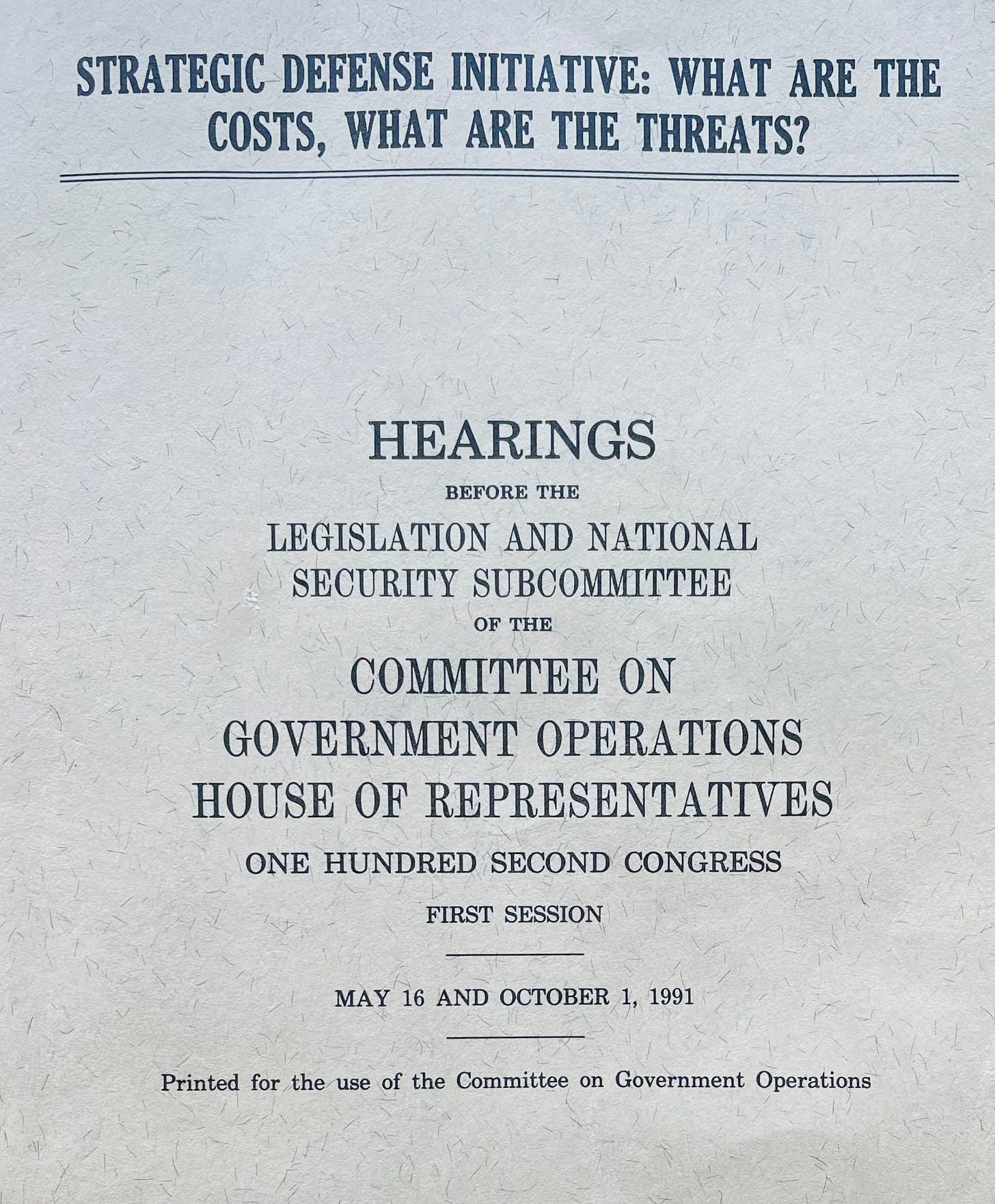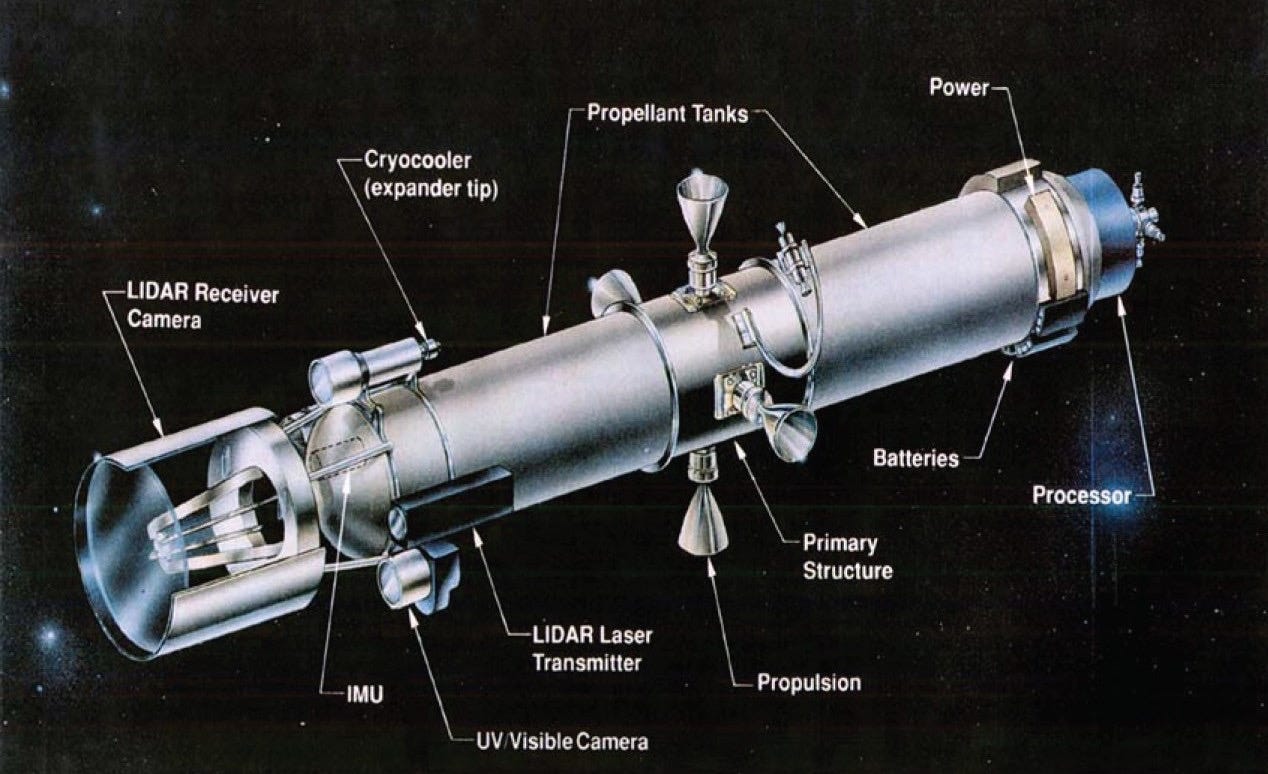This year, Congress will authorize almost $30 Billion for missile defense programs with little or no oversight. It will be no different from last year or the year before that. Whether Democrats or Republicans are in control, neither show much interest in what has become of the $380 billion Congress has authorized for these programs since President Ronald Reagan launched his “Star Wars” effort in 1983.
Most of these funds have been spent on national missile defense, that is, weapons designed to shoot down long-range, nuclear-armed missiles that can span the oceans to attack the continental United States. Funds devoted to intercepting short-range missiles that fly a few hundred miles have produced effective weapons, largely because these short-range missiles are slow, fat and hot. But reliably intercepting long-range missiles that are fast, small and cold has proved impossible.
But we knew that at the time. Scores of independent technical studies told us that national missile defense would not work. For Republicans, the program became the tip of the ideological spear they would use to kill arms control agreements in favor of defeating adversaries with superior weapons and bigger budgets. For Democrats, it was largely a game of blunting political attacks by funding the program in order not to look weak on national security. Democratic efforts contained the program and prevented it from killing arms control (for a while), but they never restructured it back into a research program, spun the short-range defensive programs back to the military services from whence they came or disbanded what became a permanent lobby within DOD — what is now known as the Missile Defense Agency.
Thirty-two years ago this month, on May 16, 1991, Congressman John Coyners, Jr. convened the first of a series of investigative hearings into the Star Wars program, formally known as the Strategic Defense Initiative, or SDI. As Conyers would write later that year, “no one wants to admit that there’s nothing really there.”
He was then chairman of the Committee on Government Operations and of the Subcommittee on Legislation and National Security that held the hearing. I was the deputy staff director of the subcommittee. It was the first congressional investigation that I would lead under Chairman Conyers. I had recently left the staff of the House Armed Services Committee, in part because I had given up hope that the HASC would conduct serious investigations into the waste, fraud and abuse rampant in major defense programs, like SDI.
Conyers did not have defense contractors showering him with large campaign contributions. He did not have defense jobs or military bases in his Detroit district to defend. He did not have an off button.
The hearings remain one of the few serious congressional investigations ever conducted into missile defense programs. In fact, I am aware of only one other set of hearings, those run by Rep. John Tierney when he chaired that same subcommittee 17 years later. (I was honored to be one of the expert witness in his hearings, on April 30, 2008.)
Conyers opened the hearing with an overview:
Over the past 8 years, the administration has been successful in convincing Congress to give it billions of dollars for Star Wars, but the program has proved remarkably unsuccessful in producing much of anything with these funds.
SDI has pulled, in effect, a reverse Rumpelstiltzken- -it has spun gold into straw. And over the past 8 years, the Congress has voted incorrectly, in my view, to authorize SDI officials to spend $24 billion. And what have we gotten for $24 billion?
Billions have been poured into projects that were only to be later abandoned:
$1 billion for the Free Electron Laser;
$1 billion for the BSTS Satellite program;
$720 million for the Space-Based Chemical Laser;
$700 million for the Neutral Particle Beam;
$866 million for the Airborne Optical Aircraft.
The list goes on.
None of these programs ever worked. No one was ever held accountable for their failures. The committee tasked the General Accounting Office (GAO) to report on the failures. They testified that unrealistic budgets and schedules, coupled with inflated expectations of SDI officials resulted in false starts, canceled projects, unstable weapons system architectures, and billions in wasted taxpayers' dollars.
Conyers continued:
What we know is that scattered around the country are dozens of test facilities, half-completed projects, hundreds of reports, and the swollen bank accounts of a handful of defense contractors and dozens of consulting firms that now specialize in getting contracts from the SDI program.
We also know that we are no closer today to making nuclear weapons "impotent and obsolete" as we were 8 years ago when President Reagan launched this wild goose chase.
By 1991, it had become impossible to ignore these failures. President George H. W. Bush began the first of what was to become multiple efforts to reconfigure the program, reduce its goals and lower exceptions - but keep the contracts going. Conyers warned of the dangers of skipping research and development to plunge into deployment of unproven weapons:
This year the administration officially abandoned its quest for a system that could protect the United States from a massive Soviet nuclear attack. President Bush has tried to find a new mission for this faltering program. Although the new plan is little more than a series of Vu-Graphs, SDI officials are repeating the mistakes of the past and plunging ahead with plans to spend over $120 billion over the next 15 years.
SDI officials explained that lasers in space would be replaced by kinetic interceptors in space (“Brilliant Pebbles”) and Ground-Based Interceptors (GBI) that would proved highly effective against what they claimed was a growing threat of “Third World” ICBMs. These claims would prove to be just as false as the previous claims. Brilliant Pebbles never proved feasible; the Ground-Based Interceptor does not work even today. It is deeply flawed and “simply unable to protect the US public” from even a limited attack, as the Los Angeles Times reported.
Conyers argued that we needed to shift funds from this impossible dream to defenses against short-range weapons. The 1991 Gulf War had recently concluded and we were still impressed by claims that Patriot interceptors had destroyed in the skies of Israel and Saudi Arabia nearly ever Scud launched by Saddam Hussein.
We also know that very little of the $24 billion was spent on the threat that we are most concerned about: short-range tactical ballistic missiles. Last year, for example, in fiscal year 1990, only $130 million of the SDI's $3.5 billion budget was devoted to this problem…It is time to "bring SDI down to Earth," as the editors of the journal Aviation Week and Space Technology recently said.
We never did. Instead of shifting funds, we just increased them. Exaggerated claims and massive budgets continued year after year, with progress on short-range interceptors masking the failures of long-range programs. It is very difficult to determine today, for example, how much of the $30 billion Congress has been asked to authorize this year for “missile defense and defeat” programs goes to the futile pursuit of national missile defense weapons. I could not find any independent expert tracking this.
Our failure to learn the lessons of the past condemns us to repeat them.
A final note. Thanks to investigations the committee conducted a year later, we learned that the claims of Patriot success in the Gulf War were also false. The Patriots had actually only hit between 0 and 4 of the 44 Scuds it attempted to intercept, not the 41 of 42 claimed.
But that is another story.








